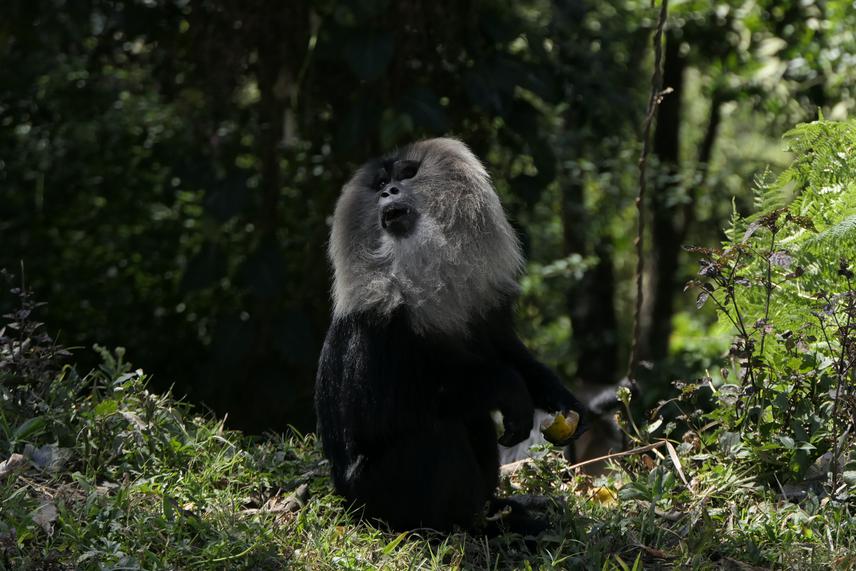Article featuring the project.
Elusive macaques show drastic behavioural changes when exposed to garbage
Ecological and Behavioural Adaptations of the Endangered Lion-Tailed Macaque to a Rainforest–Anthropogenic Habitat Matrix in India: Implications for Management I
Impact of Monkey-Proofing on Human-Macaque Conflict: Conservation of the Endangered Lion-Tailed Macaque in the Southern Western Ghats, India
This project aims to understand behavioural shifts, demographic patterns, and physiological health of a unique subpopulation of the endangered lion-tailed macaque (Macaca silenus), as it explores and exploits human habitations and human-food resources, a phenomenon observed only over the last ten years. Historically restricted to a 1km2 rainforest- fragment⎯ Puthuthottam⎯ amidst tea plantations, this population now interacts with people, often detrimentally, and faces a higher mortality rate due to human activities like vehicular traffic. Understanding the influence of anthropogenic pressures on the wellbeing of the lion- tailed macaque is of paramount importance for its management and conservation, especially in modified landscapes across Western Ghats.

The project aims to understand behavioural shifts, demographic patterns and physiological health of a unique subpopulation of the endangered lion-tailed macaque, as it explores and exploits human habitations and human-food resources.
The specific objectives are:
1. Gaining insight into the behavioural adaptability of lion-tailed macaque troops that frequent human habitations by investigating the behavioural variation in foraging and social interactions within and across the multiple troops present in Puthuthottam
2. Understanding population dynamics through an investigation into the current patterns of birth- and death rates, dispersal ability between forest fragments and patterns of habitat use (such as road visitation rates, home raides, etc)
3. Examining the physiological health of individual lion-tailed macaques in select troops in the anthropogenic landscape surrounding the Puthuthottam fragment, through an investigation of hormonal stress levels and intestinal gut microbiota (a direct indicator of health)
Through the study we hope to:
• Update the current status of this critical subpopulation of lion-tailed macaques that have now begun to include human-use foods in their diet
• Document and understand the behavioural plasticity that allows a habitat-specialist primate to adapt to anthropogenic habitats
• Understand inter-troop dynamics and dispersal ability of a growing population in a ‘restricted’ forest fragment
• Examine the direct physiological effects of human-use food consumption on the health of the macaques in their new anthropogenic habitats
Article featuring the project.
Elusive macaques show drastic behavioural changes when exposed to garbage